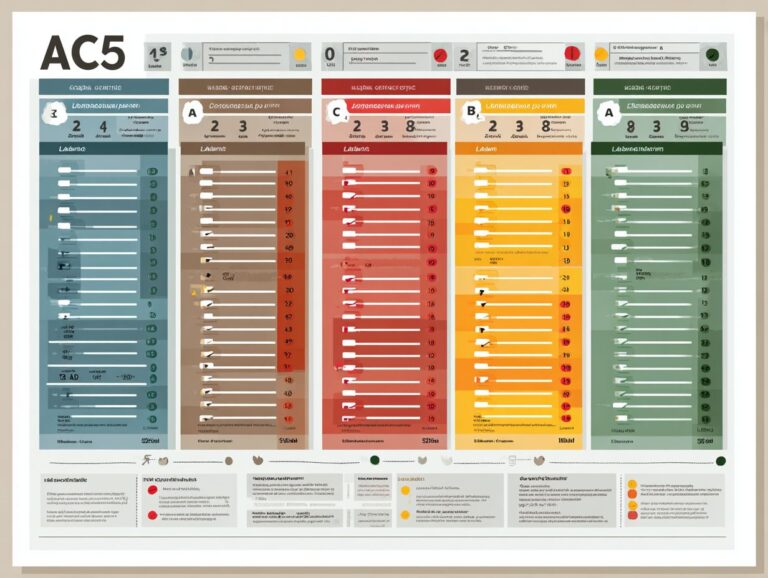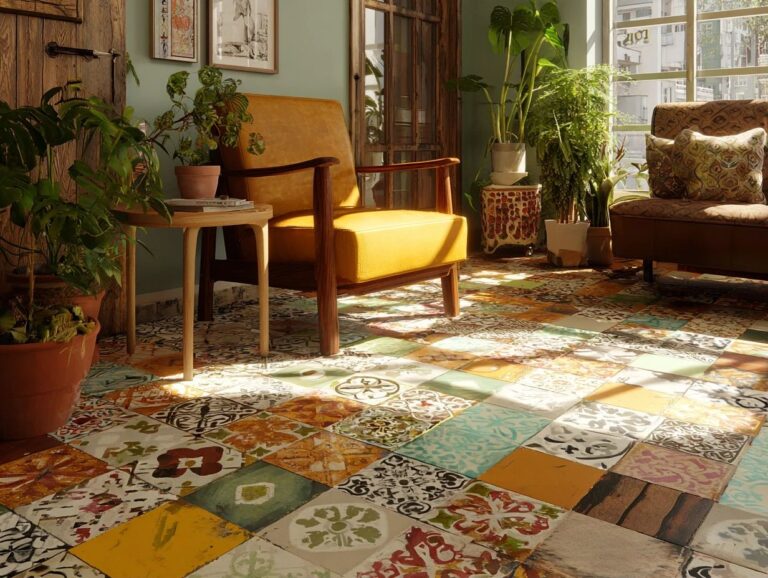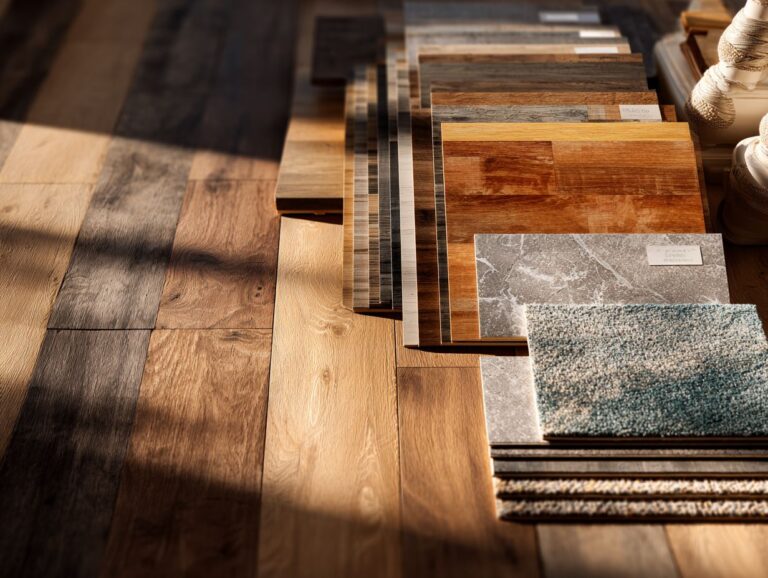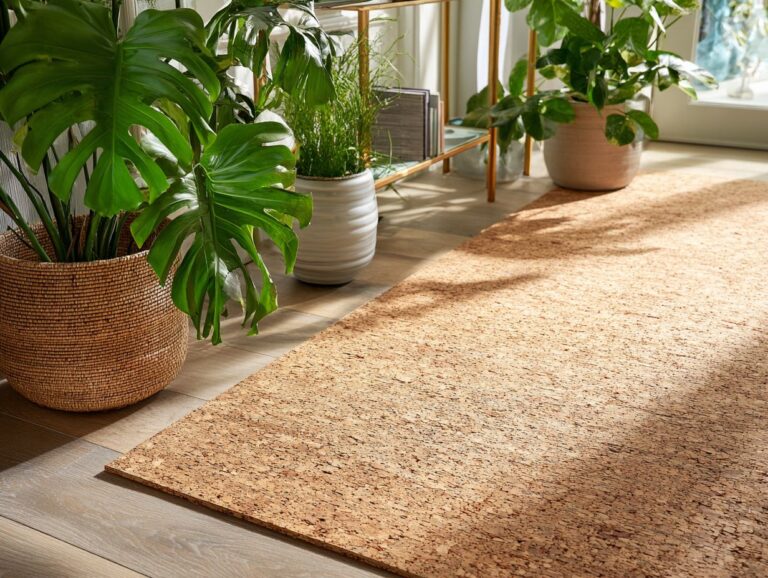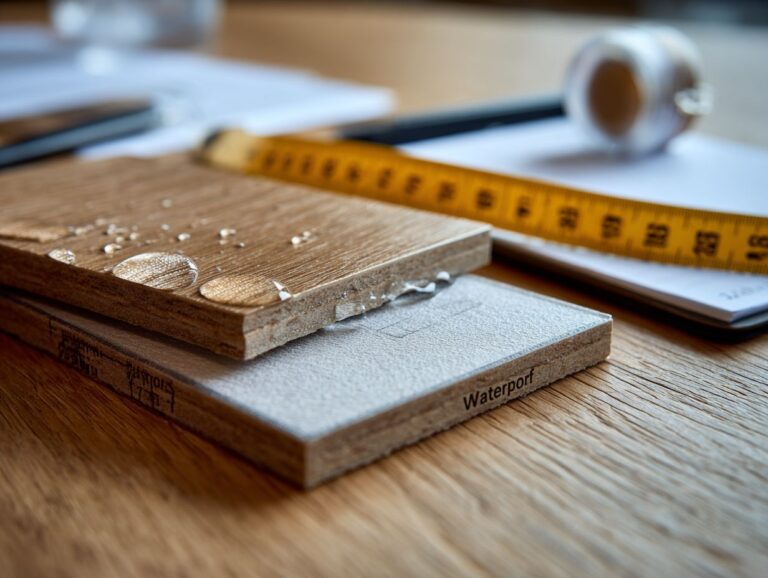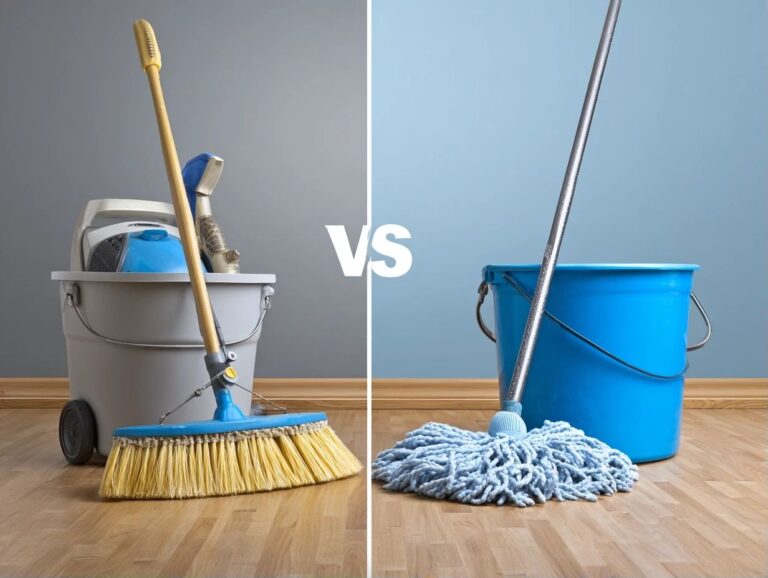Future of Flooring – Emerging Materials and Tech
New flooring options have arrived, including SPC hybrid flooring and waterproof materials that change the way our spaces look and function. Examining hybrid flooring options-such as laminate and vinyl-shows an increased attention to both quality and appearance. With the rise of WPC and SPC technologies, homeowners can enjoy stylish, durable flooring that meets diverse needs. Join us to learn about the latest trends and materials that are transforming the flooring industry today.
Key Takeaways:
Contents
- Emerging Materials in Flooring
- Flooring Innovations Statistics 2024
- Technological Advancements in Flooring
- Sustainability in Flooring Choices
- Trends in Flooring Design
- Challenges Facing New Flooring Technologies
- Future Predictions for Flooring
- Frequently Asked Questions
- What new materials are being developed for flooring options?
- How can technology alter what’s next for flooring?
- What benefits do emerging materials and technology offer for flooring?
- Will older flooring materials stop being used in the coming years?
- How will using eco-friendly materials affect flooring in the coming years?
- What new designs and styles can we look forward to in flooring?
Overview of Traditional Flooring Materials
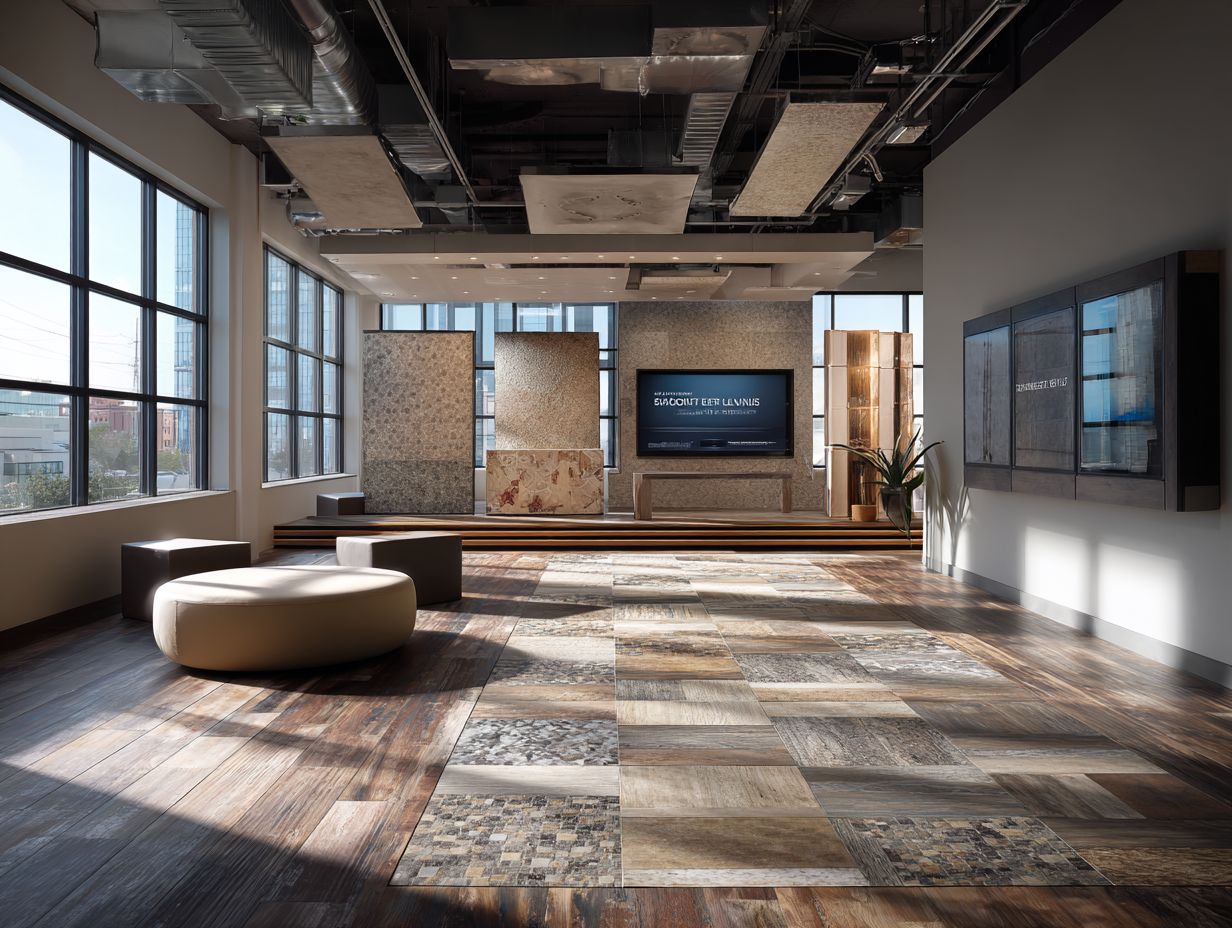
Traditional flooring materials like hardwood, laminate, and vinyl have dominated the market for decades, each offering unique benefits and drawbacks.
Hardwood is highly valued for its durability and aesthetic appeal, commanding around $8 to $15 per square foot, while laminate serves as an affordable alternative at $1 to $3 per square foot, mimicking wood’s appearance without the cost.
Vinyl flooring, costing between $2 and $6 per square foot, is favored for its ability to resist water, which makes it a common choice for kitchens and bathrooms. Currently, vinyl commands about 35% of the market share, driven by its versatility and ease of maintenance.
Knowing these characteristics allows homeowners to make informed decisions based on usage and budget.
Importance of Innovation in Flooring
New ideas in flooring are important because people want eco-friendly and effective options that match modern design trends.
Research indicates that 73% of homeowners are willing to pay more for eco-friendly materials.
For instance, bamboo flooring offers a renewable alternative with durability, while cork is both sustainable and resilient, appealing to environmentally conscious buyers.
Brands like Mohawk and Shaw use recycled materials to improve product performance while keeping their style intact.
Using new technologies can cut down on production waste and make use of low-VOC materials, appealing to consumers who care about indoor air quality and sustainability. The benefits of these practices align well with what you need to know about flooring and indoor air quality.
Emerging Materials in Flooring
New flooring options are appearing, giving choices that focus on being eco-friendly and durable while still looking good. For those interested in reducing environmental impact, considering the hidden gem of recycled and reclaimed flooring options can provide sustainable solutions with aesthetic appeal.
Flooring Innovations Statistics 2024
Flooring Innovations Statistics 2024
Flooring Industry Performance: Overall Industry Performance
Flooring Industry Performance: Category Performance
Flooring Industry Performance: Price Adjustments
The Flooring Innovations Statistics 2024 gives a complete summary of the current situation in the flooring industry, emphasizing both general performance data and trends in specific categories. This data is essential for knowing how the market works and finding opportunities for new ideas and expansion.
Overall Industry Performance reveals a 4.6% decline in sales dollars and a 3.5% decline in sales volume, indicating a challenging market environment. Despite these declines, total sales in 2024 are substantial, amounting to $23.955 billion. This figure shows the industry’s ability to bounce back and its large role in the economy, even during tough times.
- Category Performance: The statistics show varying degrees of decline across different flooring categories. Vinyl sales have decreased by 2.3%, representing a relatively moderate decline. In contrast, hardwood sales have experienced a significant 9.0% decline, which could be attributed to higher costs and maintenance requirements. Ceramic sales also saw a notable decline of 7.5%, possibly due to shifts in consumer preferences and competition from other materials.
Price Adjustments indicate a 0.03 currency unit decline in the average selling price, reflecting industry-wide pricing pressures. Looking more closely, the cost for each square foot is wood flooring is $2.73, while ceramic flooring is priced lower at $1.38 per square foot. These price points highlight the cost differences between materials, which can influence consumer choices and market trends.
In summary, the Flooring Innovations Statistics 2024 shows a complicated situation with a general drop in sales and different results in each category. The data shows a need for changes in the industry, like reviewing pricing, improving products, and responding to changing consumer preferences. By using this information, people involved can more easily handle problems and find chances for new ideas and progress in the flooring market.
Biodegradable Flooring Options
Biodegradable flooring options, such as bamboo and cork, are becoming increasingly popular for their environmental benefits and aesthetic appeal.
Bamboo flooring is durable and typically costs $3 to $8 per square foot, making it an affordable choice.
Mohawk’s Eco Solid Bamboo Collection provides various finishes that highlight its natural look and promote environmental friendliness.
Cork, priced around $4 to $7 per square foot, provides excellent insulation and sound absorption; brands like Wicanders feature stunning designs that mimic wood.
Both materials look good and help improve indoor air quality, making them great for homeowners who care about the environment.
Recycled and Upcycled Materials
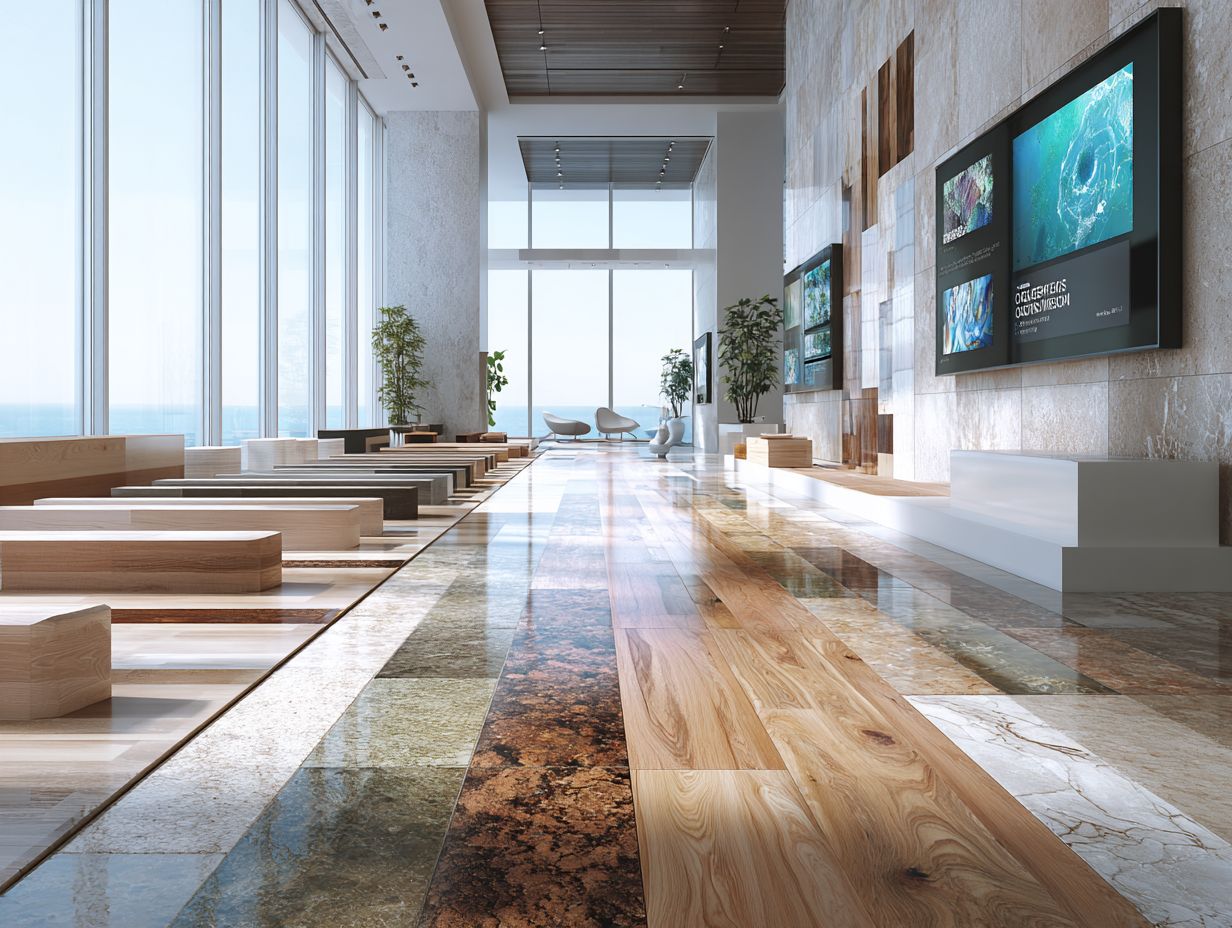
Recycled and upcycled materials are redefining flooring solutions, combining sustainability with unique design characteristics.
Among the most popular recycled options are reclaimed wood, which can range from $5 to $15 per square foot, offering a rustic charm while preserving trees.
Luxury vinyl, featuring up to 50% recycled materials, typically costs around $3 to $7 per square foot and provides excellent durability and water resistance.
Some important projects by Shaw include their EcoLogik line, which is made from recycled plastic. Armstrong Flooring, on the other hand, offers its Pryzm collections that use recycled materials.
Both brands show that environmentally friendly options can improve looks without losing effectiveness.
Smart Flooring Solutions
Intelligent flooring options combine technology with classic materials, improving features and the way people use them in contemporary homes.
Innovative products like Coretec offer features such as moisture sensors that detect water levels and alert homeowners to potential damage. Temperature control systems can adjust the climate underneath the flooring, ensuring comfort year-round.
These technologies improve durability and increase energy efficiency. Choosing strong flooring helps homeowners reduce repair costs down the road and improve their living space.
Whether opting for luxury vinyl tiles or engineered wood, integrating technology into flooring choices is a forward-thinking approach to home improvement.
Technological Advancements in Flooring
Recent advancements in making floors are leading to special patterns, improved production techniques, and more custom choices.
3D Printing in Flooring Production
3D printing is revolutionizing flooring production by allowing for customized designs at a lower cost and faster turnaround times.
This technology uses materials like thermoplastics, resin, and concrete mixtures, which are strong and flexible.
Companies like ICON are leading the way in using 3D-printed concrete floors for houses, showing detailed designs and improving strength. In the same way, Floorlink uses polyvinyl chloride (PVC) in their 3D printing, creating environmentally friendly flooring choices.
This new method cuts down on waste and lets designers quickly create models to meet client needs.
IoT and Smart Home Integration
Connecting IoT with flooring systems gives you greater control over your home settings, improving comfort and energy use.
Intelligent flooring systems track energy use and adjust temperature on their own. For example, with thermostats like Nest, people can set temperatures according to when they are home. This can lead to a 10-15% reduction in heating costs annually.
Energy monitoring tools such as Sense can analyze electricity consumption, helping users identify wasteful practices. One user mentioned saving $200 in their first year after adjusting their usage based on data analysis.
By bringing these technologies together, users improve comfort and save money, while supporting environmental health.
Advanced Manufacturing Techniques
Advanced manufacturing techniques are pushing the flooring industry towards greater efficiency and sustainability through carbon-neutral practices.
Companies like Interface and Tarkett are leading the charge by integrating automation and robotics into their production lines.
For example, Interface uses robotic systems in carpet tile production to cut material waste by up to 40%. Concurrently, Tarkett uses advanced data analysis to make better use of resources and reduce energy use.
These methods increase production speed and help achieve carbon neutrality, showing a practical approach for other manufacturers to improve sustainability.
Sustainability in Flooring Choices
Sustainability is an important factor when choosing flooring, affecting both what consumers buy and how companies make products. For an in-depth look at eco-friendly options, our guide to recycled and reclaimed flooring options explores sustainable choices that benefit both the environment and consumer preferences.
Environmental Impact of Flooring Materials
The environmental effects of flooring materials include the process of getting resources and how they are disposed of when no longer needed, highlighting the importance of eco-friendly methods.
To mitigate this impact, consider eco-friendly flooring options such as bamboo, cork, or reclaimed wood.
Bamboo grows rapidly, sequestering carbon effectively, while cork is harvested sustainably without harming the tree. Reclaimed wood repurposes old structures, significantly reducing waste.
When choosing flooring, check for certifications like FSC (Forest Stewardship Council) or LEED (Leadership in Energy and Environmental Design) to confirm eco-friendly practices. Implementing proper maintenance can also extend the life of these materials, further minimizing environmental impact.
Life Cycle Assessment of Flooring Products
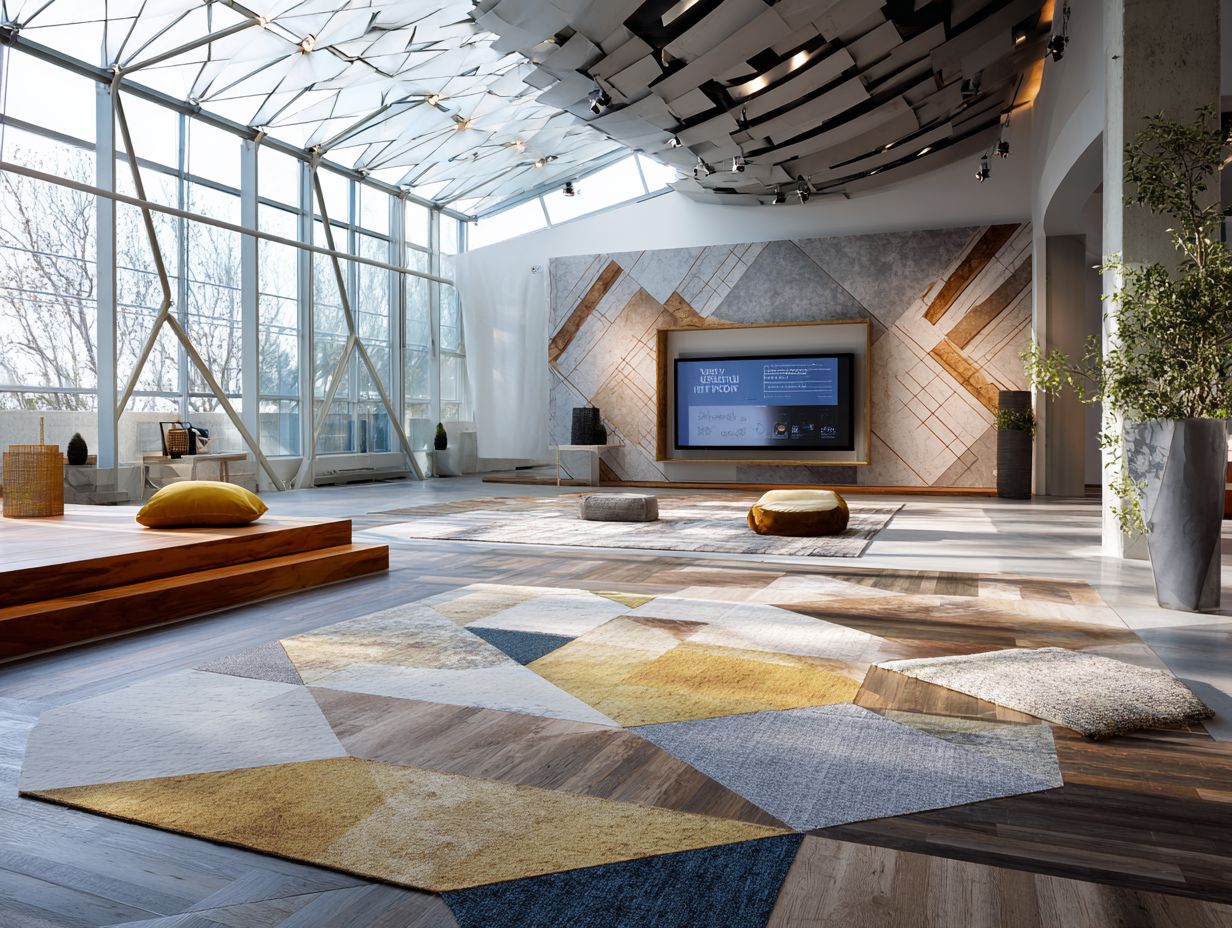
Studying the entire life cycle of flooring products helps identify the environmental effects from making to getting rid of them.
The LCA process involves four critical stages: extraction, production, use, and disposal.
During extraction, consider renewable materials like bamboo or cork, which regenerate quickly and have lower environmental footprints.
In the production phase, products such as recycled vinyl (for example, Luxury Vinyl Tile) often register lower impacts compared to traditional ceramics.
The use phase evaluates durability and maintenance, with sustainable options requiring less frequent replacement.
The disposal stage examines recycling capabilities; for instance, carpet tiles that can be repurposed reduce landfill waste significantly.
These steps show a full view of how green a flooring product is.
Trends in Flooring Design
Recent flooring styles focus on natural looks and personal choices, aligning with wider interior design themes.
Natural Aesthetics in Modern Flooring
Natural aesthetics in flooring are becoming increasingly sought after, with materials like reclaimed wood and bamboo leading the way.
These materials improve the look and match with environmentally friendly principles. For instance, reclaimed wood brings unique character and history to spaces while being sustainable.
Bamboo is a quickly growing grass, which makes it a very sustainable choice. Both choices can potentially increase market value, as buyers increasingly prioritize environmentally friendly features.
When selecting finishes, consider low-VOC or matte options, which maintain a natural look and contribute to better indoor air quality, appealing to health-conscious consumers.
Customization and Personalization Options
Customization options in flooring are on the rise, allowing consumers to tailor products to their specific tastes and needs.
Homeowners can select from a range of colors, textures, and patterns to create a floor that matches their interior design.
For example, a matte finish can give a smooth, modern appearance, while textured choices can improve hold and comfort. Patterned tiles can introduce depth and uniqueness to a space.
This trend greatly improves customer happiness by letting people choose materials that match their personal taste and needs, turning a common living area into a customized retreat.
Challenges Facing New Flooring Technologies
Although new flooring technologies have promise, some problems prevent them from being widely used and accepted in the market.
Cost Implications of Innovative Materials
The cost of innovative flooring materials often exceeds traditional options, posing challenges for widespread consumer adoption.
Despite their higher upfront costs, innovative materials like bamboo, cork, and luxury vinyl tile can offer long-term savings.
For instance, bamboo flooring, while typically priced around $3-$5 per square foot, is highly durable and eco-friendly, reducing replacement frequency. Cork flooring, priced similarly, provides natural insulation, potentially lowering energy bills.
In contrast, traditional hardwood floors can range from $4-$10 per square foot and may require frequent refinishing. Consider the full costs over time, including maintenance and energy savings, to make a wise flooring choice.
Consumer Acceptance and Market Adoption
Consumer acceptance of new flooring technologies is critical for market adoption, but varies widely based on awareness and perceived value.
A recent survey revealed that 67% of homeowners prioritize eco-friendliness in flooring choices, with technologies like bamboo and recycled vinyl leading the pack.
Case studies reveal that displaying these materials in model homes greatly increases consumer interest. For example, a major retailer experienced a 40% rise in sales for eco-friendly products when these were featured in their showrooms.
Teaching customers with online videos and detailed product information helps them see long-term advantages. This often leads to more people using the products, especially those who care about the environment.
Future Predictions for Flooring
Flooring is set to grow a lot because of new technology and more people wanting eco-friendly choices.
Potential Market Growth Areas
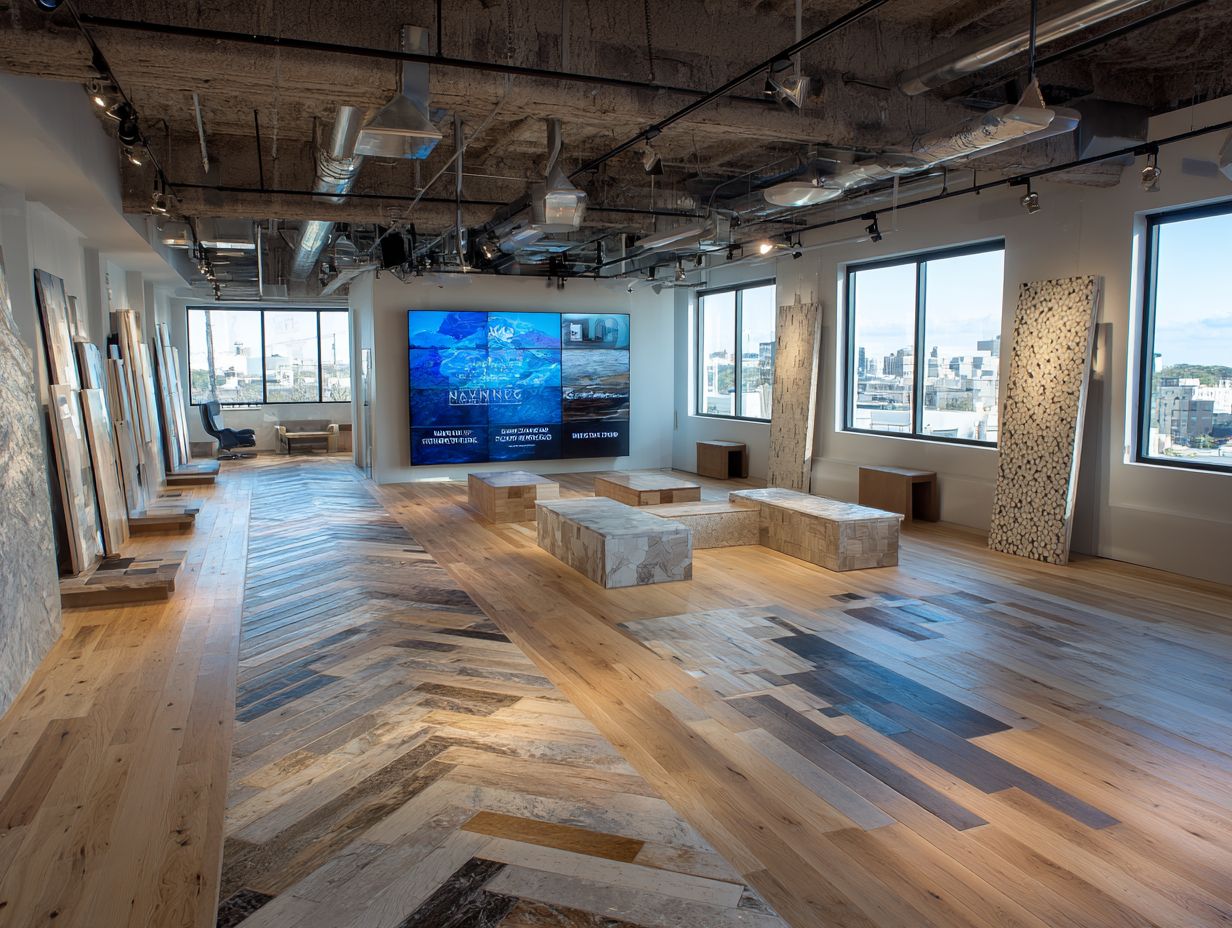
Possible opportunities for expanding the flooring market involve using environmentally friendly materials, incorporating advanced technology, and offering options that can be personalized.
The demand for sustainable flooring materials, such as bamboo and recycled wood, is surging as consumers prioritize eco-friendly products.
Companies like Cali Bamboo and Mohawk Industries are leading this trend by offering innovative, sustainable solutions. More advanced technology is now widely available; brands like Karndean Designflooring are adding features such as temperature control and sound insulation.
People are picking their preferred colors, textures, and finishes, as seen in Daltile’s custom tile options that match individual preferences.
Role of Technology in Future Designs
Technology will be important in creating new flooring designs, improving how they look and work at the same time.
New technologies like flooring with built-in sensors to save energy and 3D printing for unique designs are leading the way.
For example, companies like LignoLoc are developing engineered wood floors with built-in Wi-Fi for real-time monitoring of humidity levels, improving maintenance.
Advancements in sustainable materials, like bamboo and recycled plastics, cater to eco-conscious consumers. These trends are expected to affect buyer choices, focusing on design, usefulness, and being environmentally friendly, which makes technology-based flooring more attractive.
Summarizing the Future of Flooring
Flooring advancements will bring together technology, eco-friendliness, and visual attractiveness, meeting various consumer demands.
Innovative materials like bamboo and cork are leading the charge in sustainable flooring, offering durability alongside eco-friendliness. Recent advancements in technology enable the use of 3D printing for creating designs, making unique appearances possible.
Brands like Mohawk and Shaw are at the forefront in intelligent flooring, using sensors to monitor humidity and temperature. With more consumers focusing on sustainability, using energy-saving installation techniques like low-VOC adhesives can make products more attractive.
The flooring industry is changing to meet needs for practicality and eco-friendliness.
Frequently Asked Questions
What new materials are being developed for flooring options?
Some of the new materials for flooring in the coming years include bamboo, cork, reclaimed wood, and vinyl plank.
How can technology alter what’s next for flooring?
Technology can affect flooring in the coming years by bringing in new materials like flooring that can change color or temperature. It also makes installation and maintenance easier and better.
What benefits do emerging materials and technology offer for flooring?
Emerging materials and technology offer benefits such as increased durability, eco-friendliness, and improved aesthetics for flooring options.
Will older flooring materials stop being used in the coming years?
While people can still choose traditional flooring, these options might lose popularity as they seek more environmentally-friendly and modern choices in the coming years.
How will using eco-friendly materials affect flooring in the coming years?
People will use more sustainable materials like bamboo and cork as they become more aware of environmental issues and look for greener choices.
What new designs and styles can we look forward to in flooring?
Soon, there will be lots of design and style options for flooring, including choices that you can customize and engage with because of new technology improvements.
